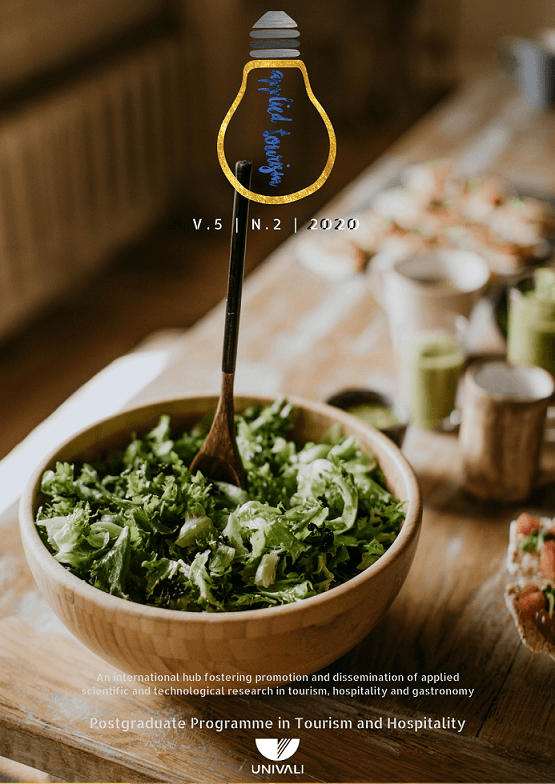

The Brazilian Carnival is considered one of the best known tourist products internationally, and is responsible for the movement and composition of flows of people, motivation for travel, generation of income and jobs, changes in supply and demand and changes in consumption habits. The events surrounding the carnival also have social, cultural, economic, political and environmental impacts on the host cities. These impacts deserve attention, along with efforts to reduce the more negative ones. The Belo Horizonte Tourism Office - Belotur, an organization linked to the Belo Horizonte City Hall, in partnership with the Department of Chemistry of the Federal University of Minas Gerais – UFMG introduced measures for the “P4Tree Technology Application at Belo Horizonte Carnival”. P4Tree is a technology developed at UFMG that consists of in the formulation of a tablet capable of holding the phosphorus element in contact with waste. This material is manipulated in the laboratory and transformed into fertilizer for use in various crops. This is because phosphorus is a fundamental nutrient for the development of any living being. The project was tested at the Belo Horizonte Carnival in 2018 and based on the results, it was replicated at the 2019 Carnival. It consisted of the application of P4Tree technology in 100 chemical toilets around the stage dedicated to the family and children’s programming of the Carnival, in the central region of Belo Horizonte, with high flow and movement of people. The toilets supplied and installed by Belotur were labeled with the project's visual identity, and were later equipped by the team of students from the UFMG Chemistry Department with P4Tree tablets in the tanks. The tablets were left in the toilets until the end of each day, before suction of the waste by the company responsible for cleaning the toilets. The P4Tree material collected was properly packaged and transferred to the University Laboratory where it was handled and made into fertilizer. This fertilizer was used/tested on five different crops at the Belo Horizonte Zoobotany Foundation, including Ipê, a tree symbol of Belo Horizonte. Tests were conducted to compare with traditional fertilizer used by the Zoobotany Foundation. The proposal is to use the seedlings of these crops to replant other areas of the city. Actions to promote the use of technology that enables the sustainability to be incorporated at one of the biggest urban events in Belo Horizonte. Due to the visibility and results achieved, it can be replicated at events with different characteristics. Interdisciplinary combination relevant to the sector, considering events as one of the main links in the tourism production chain.




ABEOC (2014). II Dimensionamento Econômico da Indústria de Eventos no Brasil 2013. Eventos Expo Editora. Available at: http://www.abeoc.org.br/wp-content/uploads/2014/10/II-dimensionamento-setor-eventos-abeoc-sebrae-171014.pdf. Accessed on May 20, 2019.
Allen, J., McDonald, I., William, O. (2003). Organização e Gestão de Eventos. CAAMPUS, São Paulo.
Crompton, J., McKay, S. (1997). Motives of visitors attending festival events. Annals of Tourism Research, 24(2), 425–439.
Elser, J. J. et al (2007). Global analysis of nitrogen and phosphorus limitation of primary producers in freshwater, marine and terrestrial ecosystems. Ecol. Lett. 10, (p.1135–1142).
Getz, D. (1997). Event management and event tourism (1st ed.). New York: Cognizant Communications Corp.
Getz, D. (1998). Event tourism and the authenticity dilemma. In W. Theobald (Ed.), Global tourism (2nd ed., pp. 409–427). Oxford: Butterworth-Heinemann.
Getz, D., Wicks, B. (1993). Editorial, International Journal of Festival Management and Event Tourism 1(1), 2.
Gursoy, D., Kim, K., Uysal, M. (2004). Perceived impacts of festivals and special events by organizers: an extension and validation. Tourism Management, 25: 171-181.
Kanashiro, S. et al (2007). Efeitos de diferentes concentrações de nitrogênio no crescimento de Aechmea blanchetiana (Baker) L.B. Sm. cultivada in vitro. Hoehnea, São Paulo, v. 34, n. 1, (p.59-66). Available at: http://www.scielo.br/scielo.php?script=sci_arttext&pid=S2236-89062007000100003&lng=en&nrm=iso. Accessed on March, 1 2019.
Mahowald, N. et al (2008). Global distribution of atmospheric phosphorus sources, concentrations and deposition rates, and anthropogenic impacts. Global Biogeochem. Cy 22, GB4026.
Matheus, J.P (2014). Deficiência do fósforo: implicações metabólicas. Seminário apresentado na disciplina Transtornos Metabólicos dos Animais Domésticos, Programa de Pós-Graduação em Ciências Veterinárias, Universidade Federal do Rio Grande do Sul, (p.16).
Mumbach, G.L et al (2016). Variação Temporal de Nitrogênio, Fósforo e Potássio em Solo Adubado com diferentes fertilizantes. Available at: https://www.alice.cnptia.embrapa.br/bitstream/doc/1059830/1/ ID438652016RBMCSAanaisp178.pdf. Accessed on May 10, 2019.
Picard, D., Robinson, M. (2006). Festivals, tourism and social change: Remaking worlds. Clevedon: Channel View.
Ritchie, J. R. B. (1997). Beacons of Light in An Expanding Universe: An Assessment Of The State-Of-The-Art in Tourism Marketing / Marketing Research, Journal Of Travel And Tourism Marketing, 5(4), 49-84.
Santos, D. R. et al (2008). Fatores que afetam a disponibilidade do fósforo e o manejo da adubação fosfatada em solos sob sistema plantio direto. Cienc. Rural, Santa Maria, v.38, n.2, (p.576-586). Available at: http://www.scielo.br/scielo.php?script=sci_arttext&pid=S0103-84782008000200049&lng=en&nrm=iso. Accessed on March 1, 2019.




Copyright (c) 2024 Eduardo Henrique de Paula Cruvinel, Idelaine Capanema da Cunha Santos, Marcos Vinicius Boffa

Este trabalho está licenciado sob uma licença Creative Commons Attribution-ShareAlike 4.0 International License.






Uma plataforma internacional com a finalidade de promover e disseminar a pesquisa científica e tecnológica aplicada em turismo, hospitalidade e gastronomia.

